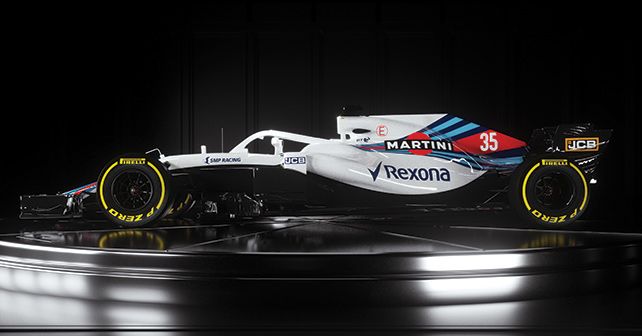
Joe wonders if F1 drivers will cease to be heroes if the danger is completely engineered out of the sport.
You can call me old-fashioned, but I just don’t like the look of the modern Formula 1 cars. They are sleek, but the whole thing is ruined by the awful halos. They look dreadful. Admittedly, at the time of writing, I have not seen them running – but these devices looks like an afterthought. Like something that non-engineers have forced engineers to accept. They are ugly. Now, if they save lives then one has to argue that they are worth having because today no-one seems to think it’s acceptable to die while taking part in a sport – except those who watch the Isle of Man TT each year and marvel at what they see. Why is that race allowed to kill people?
If F1 wants to have total cockpit safety, I would argue that one needs a much sexier solution to the problem – rather than the sort of thing that we used to come up with Meccano when we were youngsters, before everything was virtual. I’m in favour of the fighter cockpit concept and I hope that this is where the sport will end up. With that, drivers would not need to wear helmets and we could see them without helmets, on in-car cameras. That would be worth watching, because it would tell us so much about the individuals involved. If you see the faces of sportsmen, you can learn a great deal. It would also add to the charisma of the sport, because people relate to people – and trying to get excited about faceless Stigs is not an easy thing to do.
Don’t get me wrong, I’m not against trying to save the lives of racing drivers. But when I was a new boy in the sport, in the early 1980s, we used to write obituaries all the time. Today our obits are only about the old men who survived the 1960s and 1970s. These days, it’s deemed to be sacrilege to suggest that racing drivers have a choice and they choose to be racing drivers because it gives them thrills, a sense of achievement, money and girls. It’s a perfect job for a lusty young man with driving talent and what used to be called “balls,” which best translates, I guess, as courage.
Last year, people tried to tell me that Formula 1 and racing Formula 1 e-cars is the same thing, but this I do understand. Talent is not the only thing that matters. Being successful in e-racing does require talent, and I salute those who can do it, but the courage is entirely virtual.
The worst thing that can happen to an e-racer is that he (or she) will fall out of their static driving seats after a race and graze a knee, or stub their toe while waving to the crowd. For me, it’s absurd to argue otherwise. F1 drivers are paid a great deal of money because they are willing to take risks.
And the public know that, although one is ever allowed to say such a thing out loud.
But numbers are numbers, and if e-sport “racing drivers,” such as Brendon Leigh, were able to command the same kind of money as as Lewis Hamilton or Fernando Alonso, which is clearly not the case, then I would accept the argument that this is all just about talent. But it isn’t.
It’s about courage and danger, and if that ceases to be the case then the real F1 drivers will inevitably struggle when it comes time for contract renewal – because part of their value is the risk. And without risk, their value must fall. They will no longer be heroes. They will be talented, but then lots of people are talented in different ways and most do not get paid the big bucks. Soldiers and fireman are brave, but no-one becomes a fireman or a soldier to make money.
I believe that risk is absolutely key to the popularity of any form of motorsport, although there is no doubt that packaging is important as well. And removing any sense of danger is not the right thing to do – from a sporting point of view and from a commercial viewpoint. Racing drivers must be heroes, or else what are they?
Don’t misunderstand me. I’m not saying that spectators want to see racing drivers dying, or even hurting themselves. I don’t think that this is the case at all, but I think what they want to see is a sport that is visceral. They want to see drivers crawling from the wreckage, and running back to the pits to climb aboard another car. They want heroes. They want to be inspired by courage, and by the ability to take a car to the absolute limit – and one can see that. In virtual racing, the limit is virtual. It’s not about pushing the boundaries of physics.
You can shout me down on this one, but numbers are numbers. The TV viewing figures of Formula 1 and NASCAR both went through the roof following the deaths of Ayrton Senna in 1994 and Dale Earnhardt Snr in 2001. That may not be a fashionable thing to say, but it’s a reality. The official TV viewing figures in F1 jumped from 32.7 billion views (I know it’s quaint to look back at how they used to count the spectators, but it is nonetheless a reality) to 45.2 billion in 1994. That’s a jump of 28 percent. The story in NASCAR was much the same, with the Cup Series average viewership going up by more than 30 percent after the death of Dale Earnhardt Snr in 2001.
Joe Saward has been covering Formula 1 full-time for 30 years. He has not missed a race since 1988.
























Write your Comment